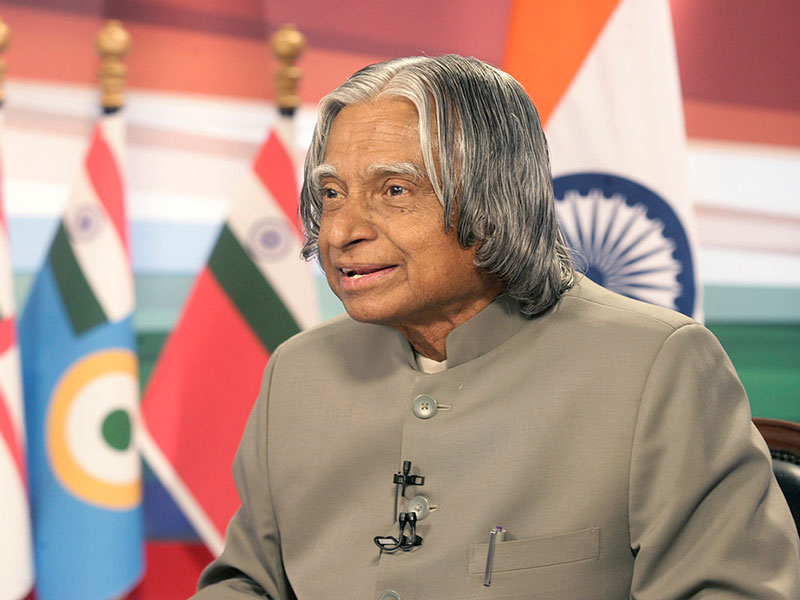
A prominent Indian scientist and a visionary, popularly known as the “missile man”, late APJ Abdul Kalam served as the 11th President of India from 2002 to 2007. Born on October 15, 1931 in a Muslim family as Avul Pakir Jainulabdeen Abdul Kalam in Rameswaram, then in the Madras Presidency of British India, Kalam hailed from a humble background. Kalam’s father Jainulabdeen was a boat owner, his mother Ashiamma was a house wife and Kalam had four elder siblings.
Kalam graduated from the Madras Institute of Technology in 1957 and started his career as a scientist in 1958 with the Aeronautical Development Establishment of the Defence Research and Development Organisation (DRDO). Since then, there was no looking back, and Kalam masterminded the production of a number of successful missiles including Prithvi missile in 1988, and the Agni missile in 1989 thereby earning the name “missile man”. He gained immense recognition and became a household name in India following his contribution to the Pokhran-II nuclear tests. Kalam assumed office as the 11th president of India on July 25, 2002. Having remained active all his life, Kalam succumbed to a cardiac arrest while delivering a lecture at IIM-Shillong on July 27, 2015 at the age of 83.
Achievements
- In the 1960’s, APJ Abdul Kalam designed a small hovercraft at DRDO, while working with the Indian National Committee for Space Research (INCOSPAR) under the space scientist Vikram Sarabhai.
- He was transferred to the Indian Space Research Organisation (ISRO) from the DRDO in 1969.
- Kalam returned to DRDO to lead the project the Integrated Guided Missile Development Programme as the Chief Executive of the IGMDP in 1983.
- In the 1970’s Kalam helped develop the Polar Satellite Launch Vehicle (PSLV) which was successfully launched on September 20, 1993.
- Kalam made significant contributions to the production of a number of successful missiles such as Prithvi missile in 1988, and Agni missile in 1989.
- In 1992, Kalam was appointed as the scientific adviser to the defense minister in 1992.
- In 1999, Kalam was appointed as the principal scientific adviser to the Government of India with the rank of cabinet minister.
- Kalam played a key role in conducting the Pokhran-II, a series of five nuclear bomb test explosions at the Indian Army’s Pokhran Test Range in May 1998.
- In 1998, Kalam proposed a plan called the Technology Vision 2020 proposing several suggestions, such as technological innovations, nuclear empowerment and improved agricultural productivity.
- In 2002, the National Democratic Alliance (NDA) nominated Abdul Kalam for the President of India.
- On July 25, 2002, Kalam assumed office as the 11th President of India on becoming the first scientist to assume the office.
- After leaving the presidential office, Kalam ventured in the academic field, and became a visiting professor in many top ranked institutions such as the IIM-Shillong, IIM-Indore and IIM-Ahmedabad. Kalam also wrote extensively and launched many initiatives for youth development such as the “Wings of Fire” and “India 2020” which have motivated millions of Indians.
- Kalam also taught information technology at the International Institute of Information Technology, Hyderabad, and technology at the Banaras Hindu University and Anna University.
Awards and honours
Kalam was a recipient of several awards and honours during his lifetime, including:
- Padma Bhushan in 1981, Padma Vibhushan in 1990 and Bharat Ratna in 1997.
- Honorary doctorates from over 40 universities worldwide.
- King Charles II Medal of the Royal Society UK in 2007.
- International von Karman Wings Award of the California Institute of Technology in 2009.